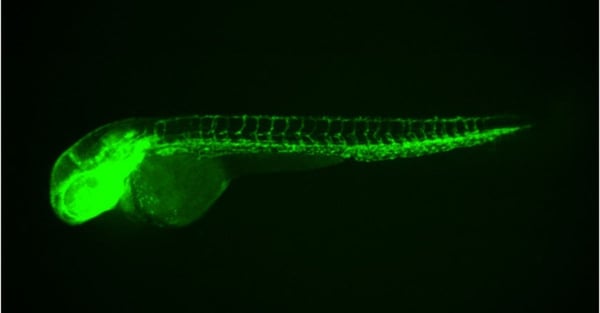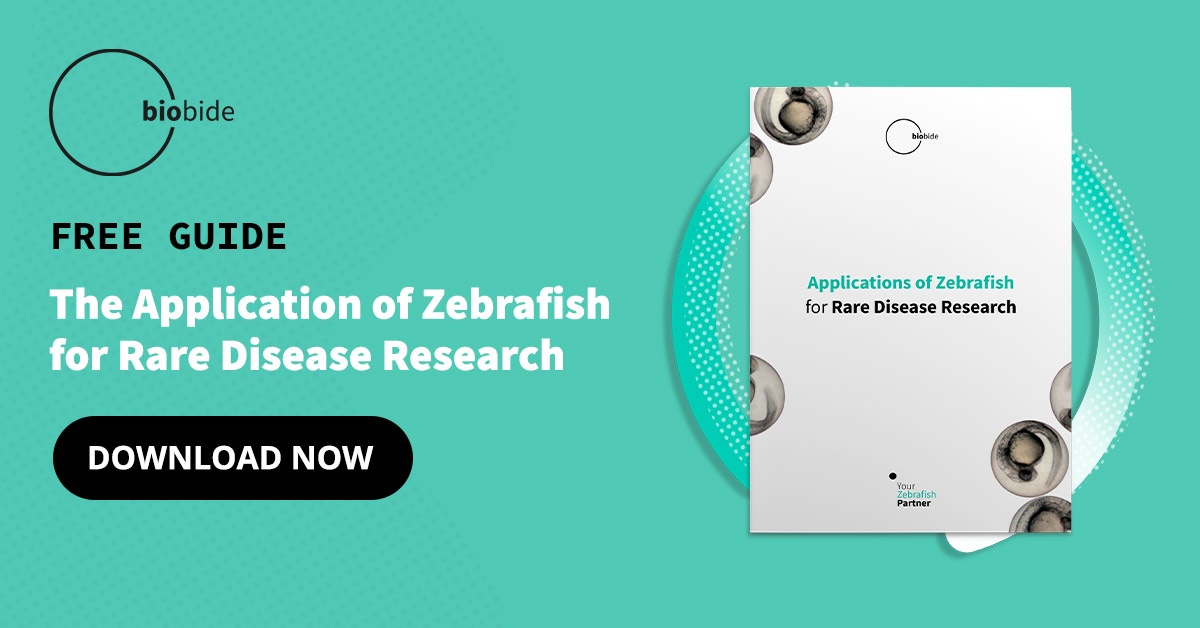Building a full understanding of how newly discovered molecules and chemical compounds interact with the biological system starts at the earliest stages of Drug Discovery. Through the use of cutting-edge science like transgenic animal models, researchers can gather valuable data on a new drug’s safety, toxicity, and efficacy at the start of the Drug Discovery process. As an example, the use of green fluorescent protein (GFP) Zebrafish is a highly effective method of transgenic testing gaining popularity in the pharmaceutical industry.
Transgenic animal models are useful for looking into how diseases could affect future human patients.
With transgenic models like GFP Zebrafish, scientists and researchers can control specific disease-related mutations. Taking advantage of homologous DNA structures and comparable behavior patterns allows for precise experiments on how new drugs and diseases affect the biological system.

What are GFP Zebrafish?
GFP Zebrafish are an example of transgenic in vivo models that can be used for high throughput screening. These genetically modified animal models help researchers discover new molecules and chemical compounds at the earliest stages of Drug Discovery and throughout preclinical studies.
The complete Zebrafish genome is fully sequenced with over 14,000 mutations readily available and widely used by the pharmaceutical industry.
The many options for genetically modified variants of Danio Rerio make the small fish easily adaptable to the specific needs of different laboratories. Even within the context of transgenic Zebrafish and green fluorescent proteins, there are established practices and models for other colors like mCherry.
Zebrafish offer the unique benefit of laying hundreds of eggs that develop in transparent embryos.
GFP Zebrafish are the most popular option for visual analysis, allowing for high throughput screenings to be quickly conducted and leading to more accurate qualitative and quantitative data.
For an example of GFP Zebrafish helping Drug Discovery, experiments on the connection between amyloid precursor proteins (APP) and the etiology of Alzheimer’s disease have shown successful results through the use of Danio Rerio. By generating transgenic Zebrafish meant to test APP, the related GFP is expressed in specific areas of the brain, spinal cord, and vascular systems of Zebrafish embryos. As the small fish mature, the same GFP can also be observed more widely spread throughout the brain.
GFP Zebrafish are providing valuable insight into how APP genes are expressed throughout the brain and nervous system during early development and further maturation. The comparable biological structures between the small fish and human patients could eventually lead into a better understanding of the disease and help test possible treatments.
Benefits of GFP Zebrafish
The surface level differences between humans and Zebrafish are hiding a deeper connection beneath the water. As a vertebrate, Zebrafish share a common evolutionary history with humans, including the development of vital structures like internal organs and biochemical pathways. 80% of human disease gene DNA has an orthologue in Zebrafish DNA.
The entire Zebrafish genome has also been fully sequenced with over 14,000 established mutations ready for use in pharmaceutical research. The full understanding of Danio Rerio DNA and its similarities to human DNA is a major part of what makes them so popular in Drug Discovery.
Zebrafish embryos and larvae offer other well-known benefits for disease research and Drug Discovery as well. By developing externally and remaining fully transparent throughout the maturation process, it is easy and non-invasive to directly observe the results of any tests and assays. GFP Zebrafish allow for even easier image analysis, clearly highlighting internal organs and structures with simple pictures.
Zebrafish are also known for their rapid development cycle and quick organogenesis, completely developing in less than 96 hours post-fertilization.
Every detail of Zebrafish DNA is well documented and fully understood, making them an ideal candidate for early Drug Discovery and genetic research into diseases. The variety of readily available mutations and naturally transparent embryos make the small fish a great candidate for large scale in vivo phenotypic and high throughput screening.
The growing popularity of GFP Zebrafish in Drug Discovery is easy to understand as the pharmaceutical industry continues to seek out reliable alternative animal models. The ease of image analysis and inherent benefits of Danio Rerio behavior naturally lead to more high quality data gathered more efficiently.





